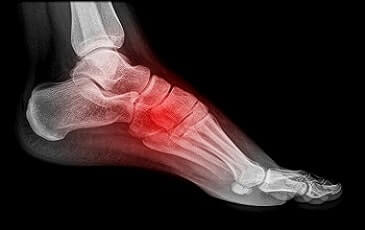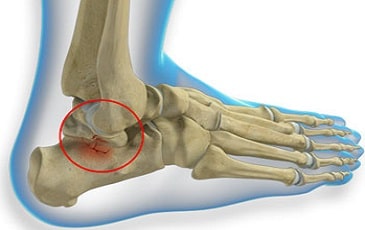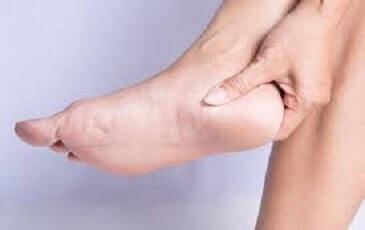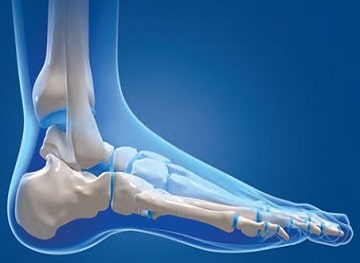Best Foot and Ankle Surgeon in Hyderabad
Foot and ankle
Distal tibia ( pilon) fractures are very serious and complex injuries with high complications. The fractures of the tibia are mostly associated with a fibular fracture that needs fixation. The treatment for distal tibia fracture is a minimally invasive percutaneous plate osteosynthesis procedure. These fractures are caused due to rotational forces, mostly due to falls from height or severe injury due to accidents.
Calcaneum fracture is also known as heel bone, it is a large bone near the rear part of the foot. The calcaneum connects with talus and cuboid bones, this connection forms a subtalar joint, which makes the foot function normally. Most of these fractures happen due to accidents or falls where the heel is crushed. These fractures can also occur due to ankle sprain, stress fractures caused by overuse. There are two types of calcaneum fractures a) intra-articular fractures. b) Extra-articular fractures.
A talus fracture is a fracture in one of the bones that form the ankle. This type of fracture often occurs due to a serious incident, such as a car accident or a fall from a height. The movement of the ankle depends upon the talus. At times, a badly twisted ankle may cause small pieces of the talus to break off, because of which there is a significant loss of motion and function. The classification of the fracture is based on the severity of the injury. There are 3 main types 1) Minimally displaced (stable) fracture 2) Displaced (unstable) fracture 3) Open fracture
Lisfrancs fracture- the lisfranc joint is the point at which the metatarsal bones and the tarsal bones meet. This ligament is a tough band of tissue that joins both these bones. The lisfranc joint is important for maintaining the alignment and strength of the joint. These fractures often found in motor vehicle accidents, football players, veterans, or when you miss a step on the staircase. There are three types of lisfranc injuries – sprains, dislocation, fractures. Depends on the severity of the fracture the surgeon may suggest the treatment such as immobilization, oral medication, ice and elevation, physical therapy.
An ankle sprain occurs when you roll, twist or turn your ankle suddenly. This twist may tear the tough bands of tissue known as ligaments which hold the ankle bones together. The treatment for a sprained ankle depends on the severity of the injury. These sprains happen mostly while exercising, running, fall that may cause a twist in the ankle, playing, jumping and fall, etc. The common signs for these ankle sprains are a pain, tenderness, swelling, bruising, unable to move the leg, popping sensation. If you don’t treat a sprained ankle properly it may lead to complications such as chronic ankle pain, chronic ankle joint instability, arthritis in the ankle joint.
Foot sprain is an injury to the ligaments that are present in the foot. These ligaments are strong bands of tissues that connect the bones together to form the joint. When these tissues get torn or stretched due to a sudden activity it causes a foot sprain. It may happen when you stumble on an uneven surface, fall badly after a jump, by kicking a hard object. The treatment for foot sprain is resting until the ligament is healed, exercises related to stretching and strengthening are done to heal, wearing the elastic bandage around the foot, using crutches for some time.
A crush injury in the foot happens when the foot is crushed forcibly between two hard surfaces. This could have happened due to car accident, heavy objects falling, or heavy machinery running over the foot. These types of injury can cause serious damage to the bones, nerves, and tissue in the affected area. The symptoms of this injury are - pain, bruising, fractures, swelling, numbness, and lacerations. Based on the severity of the injury, there is a risk of other issues such as infection, necrosis, compartment syndrome, and rhabdomyolysis.
Foot amputation is the removal of the foot of a leg by doing surgery or it might have happened due to an accident. These parts of the body are called extremities. These amputations are done if the limb is crushed in an accident, blood flow to the limb is very poor, tumors, infections, severe burns, wounds, the functioning of the limb is lost, and numbness.
Diabetic people are prone to foot problems that mostly develop due to high sugar levels that exist from a long period. The two main foot problems occur due to diabetes are neuropathy and peripheral vascular disease. Due to diabetes, nerve damage is caused, where you lose the sensation in the feet because of that you may not feel a cut, a blister or a sore. This lack of sensation may cause infections, for some cases it may even lead to amputation.



